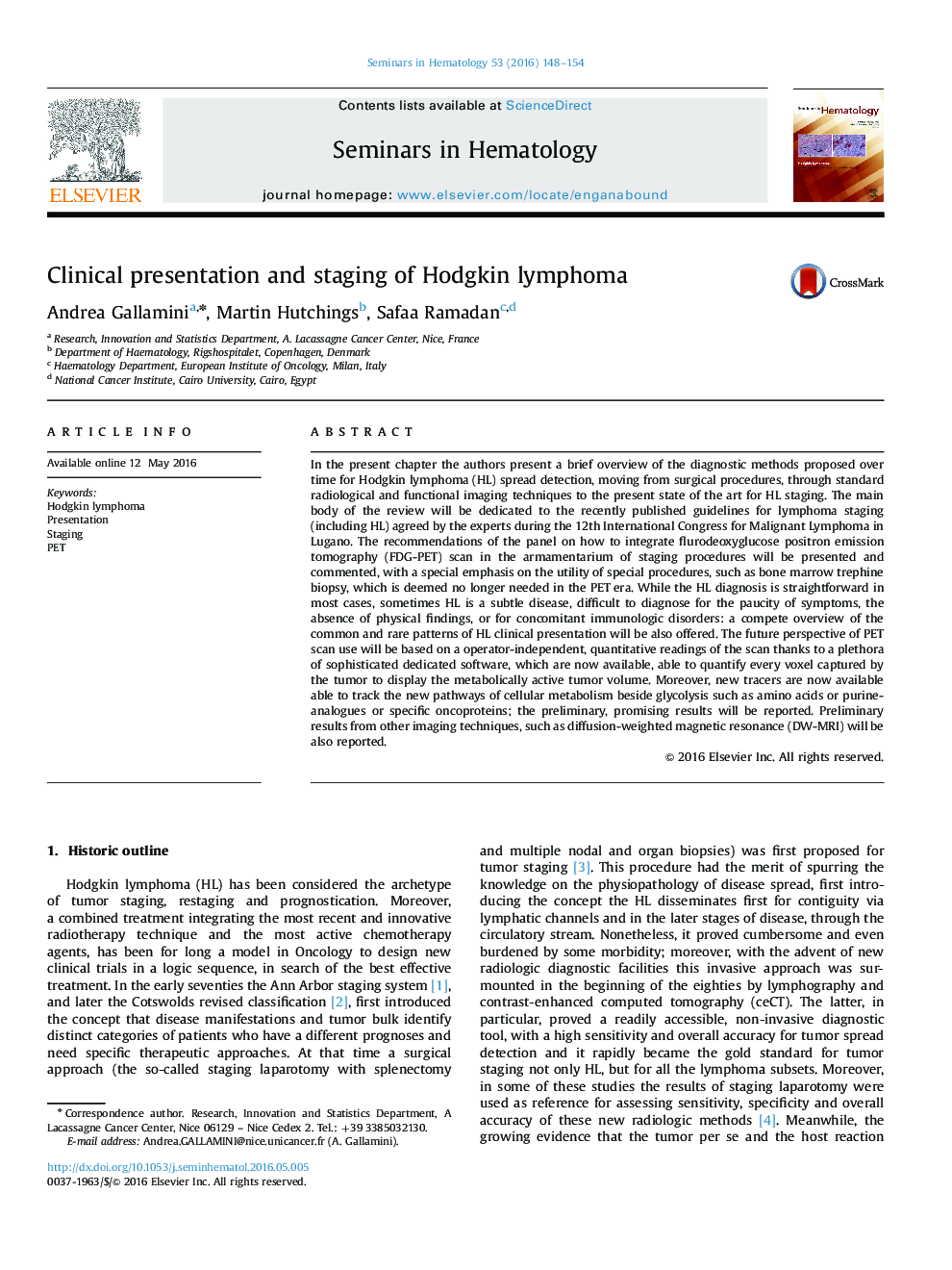| Article ID | Journal | Published Year | Pages | File Type |
|---|---|---|---|---|
| 3333362 | Seminars in Hematology | 2016 | 7 Pages |
In the present chapter the authors present a brief overview of the diagnostic methods proposed over time for Hodgkin lymphoma (HL) spread detection, moving from surgical procedures, through standard radiological and functional imaging techniques to the present state of the art for HL staging. The main body of the review will be dedicated to the recently published guidelines for lymphoma staging (including HL) agreed by the experts during the 12th International Congress for Malignant Lymphoma in Lugano. The recommendations of the panel on how to integrate flurodeoxyglucose positron emission tomography (FDG-PET) scan in the armamentarium of staging procedures will be presented and commented, with a special emphasis on the utility of special procedures, such as bone marrow trephine biopsy, which is deemed no longer needed in the PET era. While the HL diagnosis is straightforward in most cases, sometimes HL is a subtle disease, difficult to diagnose for the paucity of symptoms, the absence of physical findings, or for concomitant immunologic disorders: a compete overview of the common and rare patterns of HL clinical presentation will be also offered. The future perspective of PET scan use will be based on a operator-independent, quantitative readings of the scan thanks to a plethora of sophisticated dedicated software, which are now available, able to quantify every voxel captured by the tumor to display the metabolically active tumor volume. Moreover, new tracers are now available able to track the new pathways of cellular metabolism beside glycolysis such as amino acids or purine-analogues or specific oncoproteins; the preliminary, promising results will be reported. Preliminary results from other imaging techniques, such as diffusion-weighted magnetic resonance (DW-MRI) will be also reported.
